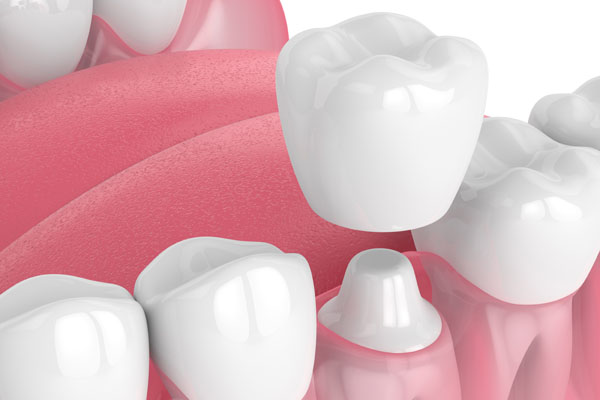Dental Implants are an Excellent Restorative Solution to Tooth Loss
 To say that dental implants are a tiny miracle that restores peoples' life may be a little melodramatic but is in fact extremely accurate. Tooth loss can be devastating for many people, so being able to replace the lost tooth with a device that recreates the tooth both in terms of aesthetics and in functionality does make a great deal of progress in restoring a person's quality of life. The root is vital to the survival of the tooth, providing it with strength and stability as well as nutrition. It also has an extremely important symbiotic relationship with the jaw bone. Tooth loss affects this relationship, which is why using a tiny titanium prosthetic to mimic the effect of the root has become so widely used. Dental implants give you all the benefits of a real tooth, including the convenience. Those with dental implants do not have to worry about what they eat since you can eat anything you would eat with your natural teeth. They also do not have to take any special effort while cleaning the implants, all that is required is your normal oral health routine. In essence, dental implants are the perfect solution to lost teeth.
To say that dental implants are a tiny miracle that restores peoples' life may be a little melodramatic but is in fact extremely accurate. Tooth loss can be devastating for many people, so being able to replace the lost tooth with a device that recreates the tooth both in terms of aesthetics and in functionality does make a great deal of progress in restoring a person's quality of life. The root is vital to the survival of the tooth, providing it with strength and stability as well as nutrition. It also has an extremely important symbiotic relationship with the jaw bone. Tooth loss affects this relationship, which is why using a tiny titanium prosthetic to mimic the effect of the root has become so widely used. Dental implants give you all the benefits of a real tooth, including the convenience. Those with dental implants do not have to worry about what they eat since you can eat anything you would eat with your natural teeth. They also do not have to take any special effort while cleaning the implants, all that is required is your normal oral health routine. In essence, dental implants are the perfect solution to lost teeth.
Dental implants come in many different forms depending on how you need them to be used. You can find a lot of information about dental implants floating around on the internet, which is both good and bad. It is good because many of you come in with a basic understanding about dental implants which allows us to address the specific elements of what you need to be done. It is bad because implants are not a one size fits all solution, and we will take the time to identify your specific needs. The implant that most people are familiar with is known as an Endosteal implant. It is typically a metal cylinder, or a screw, which is inserted directly into the jawbone for maximum stability. However, to place this kind of implant, the requirement is that you have sufficient jawbone mass to sustain the implant itself. For patients that do not have the requisite jaw mass, there is another solution known as a Subperiosteal implant. This implant is placed under the gum, but not in the jawbone. By placing it close to the bone, but not in it, the implant does not put added pressure on a bone that is already weakened.
Once your dental implants have been placed, you will need four to six weeks of recovery time before we can place a dental crown over it. In the meanwhile, there are two different ways we can protect the site while it is healing. In a one-step process, we will cover the implant with the gum tissue. This then allows the tissue to heal naturally. There is also a two-step process. In the two-step process, the dentist will place a small device known as a healing abutment over the implant. The gum tissue and bone is then allowed to heal around this abutment. There are pros and cons to each method, which we would be happy to discuss with you.
Recent Posts
A missing tooth can lead to many cosmetic and health complications. Dental implants are an effective method for treating tooth loss and restoring a person's smile. They can prevent other issues from developing, including: Speech and digestive problems Damage to surrounding teeth Improper alignment Tooth and jaw painThe results are typically permanent, and implants are…
Dental implants enable you to get as close as you can get to replacing your natural teeth roots, both in terms of function and health benefits. Dental implants require regular care like your natural teeth, which is the only way to ensure that your implant-supported teeth can last a lifetime. Read on to learn about…
A patient may invest in dental implants for a variety of different reasons, many of which focus on positively changing personal image and improving overall oral health. Implants are often applied when patients are missing one or more teeth and are not interested (or have had no success with) dentures or dental bridges. To understand…
Patients may feel overwhelmed when a dentist suggests dental implants. The process can sound intimidating, but fortunately the practice of providing patients with a brand-new smile has been studied, modernized, and improved over the past several decades. Not only can patients feel confident smiling frequently in public again, but their oral health and daily function…
 To say that
To say that 
